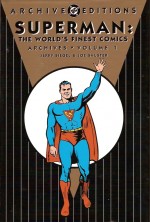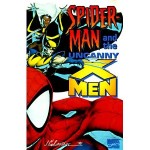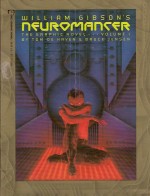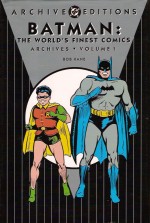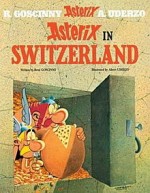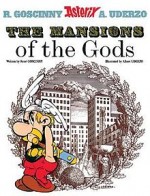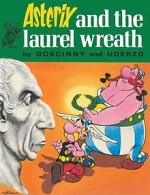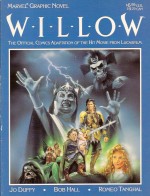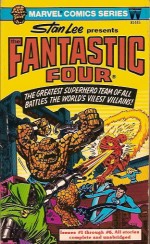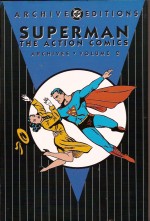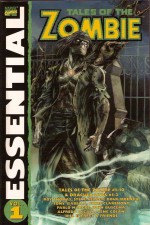
By Steve Gerber, Pablo Marcos & various (Marvel)
ISBN 0-7851-1916-7
Inspiration isn’t everything. In fact as Marvel slowly grew to a position of market dominance in the wake of the losing their two most innovative and inspirational creators, they did so less by experimentation and more by expanding proven concepts and properties. The only real exception to this was the en masse creation of horror titles in response to the industry down-turn in super-hero sales – a move expedited by a rapid revision in the wordings of the increasingly ineffectual Comics Code Authority rules.
The switch to sinister supernatural stars had a number of benefits. Most important it brought a new readership to comics, one attuned to the global revival in spiritualism, Satanism and all things spooky. Almost as important, it gave the reprint-crazy company an opportunity to finally recycle old 1950s horror stories that had been rendered unprintable and useless since the code’s inception in 1954.
This comprehensive moody monochrome tome collects the contents of Tales of the Zombie #1-10 and pertinent portions of Dracula Lives #1-2 but, despite targeting the more mature black and white magazine market of the 1970s, these are oddly coy horror stories for a generation born before “video nasties†and teen-slasher movies, so it’s not likely that you’ll need a sofa to hide behind…
The collection commences with ‘Zombie!’ illustrated by unsung legend Tony DiPreta: one of those aforementioned, unleashed 1950s reprints which found its way as cheap filler into the back of Dracula Lives #1 (August 1973). In this intriguing pot-boiler criminal Blackie Nolan runs for his life when the man he framed for his crimes animates a corpse to extract his revenge…
A few months earlier Marvel Editor-in-Chief Roy Thomas had green-lighted a new mature-reader anthology magazine starring a Walking Deadman, closely based on a classic 1953 Stan Lee/Bill Everett thriller originally published in Menace #5. Tales of the Zombie #1 had a cover-date of July 1973 and contained a mix of all-new material, choice reprints and text features to thrill and chill all the voodoo devotees of comics land.
The undead excitement begins with ‘Altar of the Damned’ by Thomas, Steve Gerber, John Buscema & Tom Palmer, introducing wealthy Louisiana coffee-magnate Simon Garth as he frantically breaks free of a voodoo cult determined to sacrifice him. He is aided by priestess Layla who usually earns her daily bread as his secretary. Unfortunately, the attempt fails and Garth dies only to be brought back as a mighty, mindless slave of his worst enemy Gyps – the petty, lecherous gardener fired for leering at the boss’s daughter…
Next comes a retouched, cunningly recycled reprint of the aforementioned Everett ‘Zombie!’ yarn, adapted to depict the Garth as the corpse walker rampaging through Mardi Gras before exacting a far more permanent punishment on the ghastly gardener, after which the Dick Ayers limned ‘Iron Head’ saw a deep sea diver take a decidedly different look at the native art of resurrection…
‘The Sensuous Zombie!’ is a cinematic history of the sub-genre and ‘Back to Back and Belly to Belly at the Zombie Jamboree Ball!’ an editorial tribute to Bill Everett after which Kit Pearson, Marv Wolfman & Pablo Marcos revealed the secret of ‘The Thing From the Bog!’ whilst Tom Sutton applied a disinterred tongue to his cheek for the blackly comic story of ‘The Mastermind’.
Gerber, Buscema & Syd Shores then returned to the saga of Simon Garth in ‘Night of the Walking Dead!’, as the murdered man’s daughter lost the amulet which controlled the zombie to a psychotic sneak thief…
Pertinent portions of Dracula Lives #2 follow as ‘The Voodoo Queen of New Orleans!’ by Thomas, Gene Colan & Dick Giordano relates the Lord of Vampires’ clash with the undying mistress of magic Marie Laveau (tenuously included here as the charismatic bloodsucker strides past the recently deceased Garth on a crowded Mardi Gras street) before Tales of the Zombie #2 unfolds in its gory entirety.
Gerber & Marcos led off with ‘Voodoo Island!’ as daughter Donna Garth took ship for Port-Au-Prince, determined to learn all she could about the dark arts whilst the shambling cadaver of her father was drawn into the nefarious affairs of criminal mastermind Mr. Six. By circuitous means the mindless but instinct-driven Garth also ended up in Haiti just as a madman turning women into giant spiders decided Donna would be an ideal test subject… Luckily the one-time coffee-king’s best friend Anton Cartier was a resident and an expert on Voodoo lore…
‘Voodoo Unto Others’ by Tony Isabella & Winslow Mortimer tells a grim but affecting tale of the law of the Loa whilst ‘Acid Test’ by Stan Lee & George Tuska is another 1950’s thriller culled from Marvel’s chiller vaults, followed by a text feature trumpeting the company’s “next big thing†with ‘Introducing Brother Voodoo’ by Isabella.
It was back to contemporary times with the stunning graveyard re-animator yarn ‘Twin Burial’ by Chuck Robinson & Ralph Reese, balanced by creepy Colan classic ‘From Out of the Grave’ after which Chris Claremont asked ‘Voodoo: What’s it All About, Alfred?’ in an expansive prose piece, before Gerber & Marcos concluded the Garth mini-saga in ‘Night of the Spider!’
Issue #3 found the Zombie still lurching around Haiti in ‘When the Gods Crave Flesh!’, encountering a manic film director and his histrionic starlet wife who wanted to expose Voodoo to the judgemental celluloid eye of Hollywood.
Bad, bad, bad idea…
Claremont scripted a prose shocker next, contributing part 1 of ‘With the Dawn Comes Death!’, lavishly illustrated with stock movie stills before ‘Net Result’ provided another Atlas-era atrocity (by DiPreta) whilst Isabella & Vincente Alcazar excelled with a new epic of samurai-against-dragon in ‘Warrior’s Burden’.
‘The Night of the Living Dead Goes on and on and on’ provided an in-depth analysis of the movie that restarted it all by Don McGregor, and Bill Walton limned the Fifties fear-fest ‘I Won’t Stay Dead’ before Doug Moench & Enrique Badia crafted a grim period piece of perilous plantation peril in ‘Jilimbi’s Word’ after which ‘Tales of the Zombie Feature Page’ closed the issue with a Steve Gerber interview and a critique of George A. Romero’s film Codename: Trixie – which we all know today as The Crazies…
Tales of the Zombie #4 (March 1974) opened with ‘The Law and Phillip Bliss’ as the mystic Amulet of Damballah irresistibly drew Garth back to New Orleans at the unwitting behest of a down-and-out with a grudge, swiftly followed by another movie feature by McGregor, this time examining the spooky overtones of current James Bond flick ‘Live and Let Die’, after which Gerry Conway, Rich Buckler, Vic Martin & Win Mortimer crafted a comicstrip film-thriller in ‘The Drums of Doom!’
Fantasy author Lin Carter explored popular modern supernatural proliferation in his article ‘Neo-Witchcraft’, ‘Courtship by Voodoo’ (by Isabella & Ron Wilson) recounted Egyptian romantic antics, and Moench & Mortimer disclosed the downside of desecrating graves for fun in ‘Nightfilth Rising’.
John Albano & Ernie Chua (nee Chan) told the tragic tale of ‘Four Daughters of Satan’ before ‘The Law and Phillip Bliss’ concluded in a cathartic slaughter of high-priced lawyers, whilst ‘the Zombie Feature Page’ highlighted the work and life of artist Pablo Marcos,
‘Palace of Black Magic!’ saw Phil Glass lose the amulet and control of Garth to crimelord Mr. Six and the Zombie become a terrifying weapon of sinister Voodoun lord Papa Shorty, until his new master’s own arrogance led to carnage and a kind of freedom for the Dean Man Walking, after which issue #5 continues with Moench’s filmic tribute article ‘White Zombie: Faithful Unto Death’ and a Russ Heath Atlas classic ‘Who Walks with a Zombie?’
The concluding instalment of Claremont’s prose piece ‘With the Dawn Comes Death!’ preceded another text infomercial ‘Brother Voodoo Lives Again…’ and new western horror story ‘Voodoo War’ by Isabella, with moody art from Syd Shores & Ayers, and ToTZ# 5 finished on a gritty high with ‘Death’s Bleak Birth!’ a powerful supernatural crime thriller by Moench & veteran illustrator Frank Springer.
Tales of the Zombie #6 (July 1974) opened with a handy update of events thus far before launching into Gerber & Marcos’ ‘Child of Darkness!’ wherein the anguished ambulatory remains of Simon Garth interrupts a hidden Voodoo ritual and encounters once more the Mambo Layla, who tried in vain to save him before his death and revivification. Even together though, they are unprepared for the vicious thing lurking in the swamp’s deepest recesses…
Gerry Boudreau then explored the history of the genre by critiquing Hammer Films’ ‘The Plague of the Zombies’ followed by a hilarious photo-feature on Zombie/blacksploitation movie ‘Sugar Hill’ and Claremont’s article on all things undead in ‘The Compleat Voodoo Man’.
Brother Voodoo had initially run in Strange Tales #169-173, from September 1973 to April 1974, ending on a cliffhanger which was concluded here with the Moench, Len Wein, Colan & Frank Chiaramonte epic ‘End of a Legend!’ as the Man with Two Souls finally defeated Voodoo villain Black Talon before ‘The Voodoo Beat’ by Carla Joseph rounded up a selection of movies and books then available regarding all things Cadaverous and Fetishy…
Moench & Alfredo Alcala provided a fill-in tale for the wandering corpse in ‘The Blood-Testament of Brian Collier’ as Garth shambled into a High Society murder-mystery, after which an article from the Village Voice by Kenneth Dreyfack on ‘Voodoo in the Park’ follows, notable to comics fans because it was illustrated by future great Dan Green, closely followed by Moench & Mortimer’s comics featurette ‘Haiti’s Walking Dead’ and ‘Inside Voodoo’ a book review by Claremont. The issue ended with ‘A Second Chance to Die’ – a classy short thriller by Carl Wessler & Alcala.
Tales of the Zombie #8 (November 1974) opened with a similar frontispiece feature by Isabella & Michael Kaluta ‘The Voodoo Killers’, whilst Gerber & Marcos returned to the title character with ‘A Death Made of Ticky-Tacky’ as Garth and Layla at long last reached New Orleans and fell foul of bored urban swingers looking for a different kind of good time. ‘Jimmy Doesn’t Live Here Anymore’ offered a chilling prose vignette by David Anthony Kraft, liberally illustrated by Kaluta.
‘Night of the Hunter’ by scripter Larry Lieber and rendered by Ron Wilson, Mike Esposito & Frank Giacoia saw a corrupt prison guard realise he’d tortured and killed the wrong black man when the victim’s brother turned up straight from the sinister heart of Haiti.
‘Tales of the Happy Humfo’ was another article on Voodoo by Claremont, spiced up with Kaluta drawings and Alcala again shut the show down with ‘Makao’s Vengeance’ a slick jungle chiller scripted by David Kraft.
The first issue of 1975 opened with ‘Was He a Voodoo-Man?’ by Isabella & Mortimer, after which the author then scripted the stunning Zombie headliner ‘Simon Garth Lives Again!’ illustrated by Virgilio Redondo & Alcala, whilst Claremont & Yong Montano contributed the second chapter in the saga; ‘A Day in the Life of a Dead Man’ for the ubiquitous Alcala to ink before Isabella & Marcos concluded the Garth extravaganza with ‘The Second Death Around’. As an added bonus Moench & Alcala also designed a swampy slaughter-party in ‘Herbie the Liar Said it Wouldn’t Hurt!’
Tales of the Zombie #10 (March 1975) led with a Brother Voodoo tale by Moench & Tony DeZuniga wherein the Lord of the Loa struggled to prevent ‘The Resurrection of Papa Jambo’ (the scheduled Simon Garth saga having been lost in the post at time of printing), with medical nightmare ‘Eye For an Eye, Tooth For a Tooth’ by Conway, Virgilio Redondo & Rudy Nebres; Wessler, John Warner & Alcazar’s death-row chiller ‘Malaka’s Curse!’ and the great Tom Sutton’s macabre ‘Grave Business’ bringing up the rear.
The horror boom was swiftly waning by this time and the advertised 11th issue never materialised. An all-reprint Tales of the Zombie Super-Annual was released that summer with only the cover reproduced here.
Peppered with vibrant Zombie pin-ups by Marcos and Sutton and covers by Boris Vallejo and Earl Norem, this intriguing monochrome compendium, although a little dated, does contain what passed for Explicit Content in the mid 1970s, so although the frights should be nothing for today’s older kids, the occasional nipple or buttock might well send them screaming over the edge.
However with appropriate mature supervision I’m sure this groovy gore-fest will delight many a brain-eating fright fan…
©1973, 1974, 1975, 2006 Marvel Characters, Inc. All Rights Reserved.


